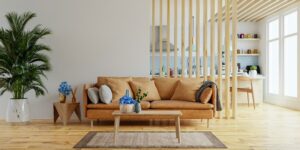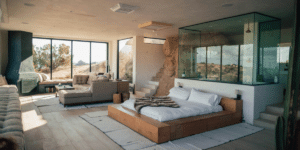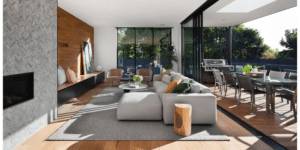Creating a minimalist home design can bring a sense of calm and order to your life. It’s about more than just decluttering; it’s about carefully choosing what you bring into your space and creating a functional and beautiful environment. This guide will walk you through the key principles of minimalist design and offer practical tips for achieving this style in your own home.
One of the core ideas of minimalism is simplicity. This means avoiding unnecessary decorations and focusing on essential items. Think about what you truly need in each room and remove anything that doesn’t serve a purpose. This might involve getting rid of excess furniture, decorative items, or even clothing. This process can be challenging, but it’s crucial for creating a truly minimalist space. Start by decluttering one area at a time, like a drawer or a corner of a room, and gradually work your way through your home.
Color palettes in minimalist design are typically neutral. Whites, grays, and beiges are common choices for walls and larger furniture pieces. These neutral colors create a sense of spaciousness and allow other elements in the room, like textures and natural materials, to stand out. You can add subtle pops of color with a few carefully chosen accessories, like a throw pillow or a piece of art, but avoid using too many bright or contrasting colors. This keeps the overall look clean and uncluttered.
Minimalist design values quality over quantity. Instead of buying many inexpensive items, invest in a few well-made pieces that will last. This approach is more sustainable in the long run and contributes to the overall sense of simplicity. When choosing furniture, look for pieces with clean lines and simple shapes. Avoid ornate details or excessive embellishments. Natural materials like wood, metal, and glass are often used in minimalist interiors, adding warmth and texture to the space.
Functionality is another key aspect of minimalist design. Every item in your home should have a purpose. This means choosing furniture and accessories that are not only aesthetically pleasing but also practical and useful. For example, a storage ottoman can provide seating and storage space, while a simple shelf can display books and decorative objects. Consider how you use each room and choose furniture that supports those activities.
Lighting plays a significant role in creating a minimalist atmosphere. Natural light is always preferred, so maximize the amount of sunlight that enters your home by keeping windows clear and using light window coverings. You can supplement natural light with simple and unobtrusive light fixtures. Avoid overly decorative chandeliers or lamps. Recessed lighting or simple pendant lights are good choices for minimalist interiors.
Organization is crucial for maintaining a minimalist home. Everything should have its place, and clutter should be kept to a minimum. Use storage solutions like baskets, boxes, and shelves to organize your belongings and keep them out of sight. This helps to create a sense of order and calm in your space. Consider using storage furniture that blends seamlessly with the overall design.
Bringing nature indoors can enhance a minimalist space. Plants can add a touch of life and color without disrupting the clean aesthetic. Choose simple and low-maintenance plants like succulents or snake plants. Place them strategically in your home to create focal points and add a sense of freshness. Avoid using too many plants, as this can create a cluttered look.
Creating a minimalist home design on a budget is possible. Start by decluttering what you already own. You might be surprised at how much you can achieve simply by removing unnecessary items. You can also look for affordable furniture and accessories at secondhand stores or online marketplaces. Focus on finding pieces with clean lines and simple designs. Remember, the key is to prioritize quality over quantity and choose items that are both functional and beautiful.
Maintaining a minimalist home is an ongoing process. It requires consistent effort to keep clutter at bay and maintain a sense of order. Regularly declutter your belongings and avoid accumulating unnecessary items. This will help you to maintain the calm and peaceful atmosphere that is characteristic of minimalist design. By following these tips, you can create a beautiful and functional minimalist home that reflects your personal style and promotes a sense of well-being. This design style is more than just a trend; it’s a way of living that can simplify your life and bring you a sense of peace. It’s about creating a space that you truly love and that supports your lifestyle.













